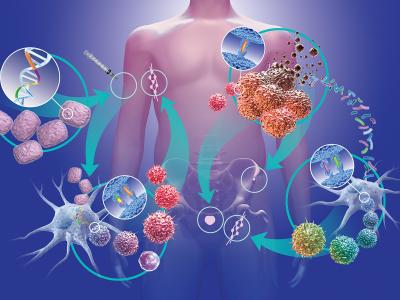Deep Learning
Today, the cameras are fixed everywhere, in streets, in vehicles, and in any public area. However, Analysis and extraction of information from images are required. Particularly, in autonomous vehicles and in smart applications that are developed to guide tourists. So, a large dataset of scene text images is an important and difficult factor in the extraction of textual information in natural images. It is the input to any computer vision system.
- Categories:
 946 Views
946 ViewsWe present below a sample dataset collected using our framework for synthetic data collection that is efficient in terms of time taken to collect and annotate data, and which makes use of free and open source software tools and 3D assets. Our approach provides a large number of systematic variations in synthetic image generation parameters. The approach is highly effective, resulting in a deep learning model with a top-1 accuracy of 72% on the ObjectNet data, which is a new state-of-the-art result.
- Categories:
 643 Views
643 ViewsWith the modern day technological advancements and the evolution of Industry 4.0, it is very important to make sure that the problem of Intrusion detection in Cloud , IoT and other modern networking environments is addressed as an immediate concern. It is a fact that Cloud and Cyber Physical Systems are the basis for Industry 4.0. Thus, intrusion detection in cyber physical systems plays a crucial role in Industry 4.0. Here, we provide the an intrusion detection dataset for performance evaluation of machine learning and deep learning based intrusion detection systems.
- Categories:
 4099 Views
4099 Views
Detecting radioactive materials in mixtures is challenging due to low concentration, environmental factors, sensor noise, and others. This paper presents new results on nuclear material identification and mixing ratio estimation for mixtures of materials in which there are multiple isotopes present. Conventional and deep learning-based machine learning algorithms were compared. Both simulated and actual experimental data were used in the comparative studies.
- Categories:
 136 Views
136 ViewsAspect Sentiment Triplet Extraction (ASTE) is an Aspect-Based Sentiment Analysis subtask (ABSA). It aims to extract aspect-opinion pairs from a sentence and identify the sentiment polarity associated with them. For instance, given the sentence ``Large rooms and great breakfast", ASTE outputs the triplet T = {(rooms, large, positive), (breakfast, great, positive)}. Although several approaches to ASBA have recently been proposed, those for Portuguese have been mostly limited to extracting only aspects without addressing ASTE tasks.
- Categories:
 538 Views
538 ViewsThe University of Turin (UniTO) released the open-access dataset Stoke collected for the homonymous Use Case 3 in the DeepHealth project (https://deephealth-project.eu/). UniToBrain is a dataset of Computed Tomography (CT) perfusion images (CTP).
- Categories:
 4015 Views
4015 ViewsThe lack of gold standard methodology for synergy quantification of anticancer drugs warrants the consideration of different synergy metrics to develop efficient Artificial Intelligence-based predictive methods. Furthermore, neglecting combination sensitivity in synergy prediction may lead to biased synergistic combinations that are inefficient in conferring anticancer activity.
- Categories:
 610 Views
610 Views
The dermoscopic images considered in the paper "Dermoscopic Image Classification with Neural Style Transfer" are available for public download through the ISIC database (https://www.isic-archive.com/#!/topWithHeader/wideContentTop/main). These are 24-bit JPEG images with a typical resolution of 768 × 512 pixels. However, not all the images in the database are in satisfactory condition.
- Categories:
 1668 Views
1668 Views





